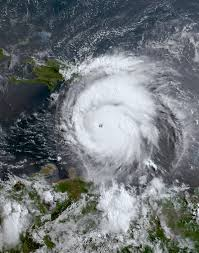Hurricane Beryl Tax Relief
- Platinum Professional Services
- Jul 22, 2024
- 2 min read
The IRS has announced significant tax relief for individuals and businesses in 67 Texas counties affected by Hurricane Beryl, which began on July 5, 2024. Residents and businesses in these areas now have until February 3, 2025, to file various federal tax returns and make tax payments. This relief applies to all areas designated by FEMA, and any future counties added to the disaster zone will also be eligible. The complete list of currently eligible counties can be found on the IRS website.
The tax relief includes postponing filing and payment deadlines that occurred between July 5, 2024, and February 3, 2025. This means affected taxpayers can now file returns and pay any taxes due during this period by the February 3, 2025 deadline. For example, individuals, businesses, or tax-exempt organizations with valid extensions to file their 2023 returns now have until this new deadline. However, payments on these returns, originally due last spring, are not extended. Additionally, deadlines for quarterly estimated income tax payments, payroll, and excise tax returns are also extended.
Taxpayers in the affected areas will automatically receive filing and penalty relief from the IRS based on their address of record. Those who have moved to the disaster area after filing their return and receive a late filing or payment penalty notice should contact the IRS to have the penalty abated. The IRS will also assist taxpayers living outside the disaster area but whose records are within the affected zone. They can call a dedicated number for support. This relief extends to workers assisting in relief efforts with recognized organizations.
Further tax relief is available for those who suffered uninsured or unreimbursed disaster-related losses. Affected individuals and businesses can claim these losses on their 2024 or 2023 tax returns. Additional provisions include the exclusion of qualified disaster relief payments from gross income and potential special disaster distributions from retirement plans without the 10% early distribution tax. The IRS may offer further relief as needed, and more information on disaster recovery can be found at disasterassistance.gov.

.png)






new88 mang đến hệ sinh thái giải trí trực tuyến phong phú với hàng trăm tựa game hấp dẫn như casino, thể thao, bắn cá và quay hũ. Nền tảng hoạt động ổn định, tốc độ xử lý nhanh và hỗ trợ khách hàng tận tâm. Bên cạnh đó, new888 cũng là điểm đến uy tín được nhiều người chơi tin chọn. Khám phá ưu đãi và trải nghiệm ngay tại onew88 com để nhận cơ hội thắng lớn mỗi ngày.
với e2betclb com, người chơi được trải nghiệm kho trò chơi đa dạng từ thể thao, nổ hũ, bắn cá đến game bài truyền thống, cùng với hệ thống bảo mật tiên tiến, thanh toán nhanh chóng và ưu đãi hấp dẫn dành cho hội viên tại https://e2betclb.com/
RIKVIP đem đến hiệu ứng âm thanh và hình ảnh sống động, mang cảm giác như đang tham gia sòng bài thực thụ. Người chơi truy cập rikvip za com để tận hưởng trải nghiệm mượt mà với tốc độ tối ưu.
KJC là liên minh giải trí trực tuyến quy tụ các thương hiệu uy tín hàng đầu châu Á, vận hành minh bạch với kho trò chơi đa dạng. Nền tảng kjc lgbt luôn tối ưu công nghệ để game thủ tận hưởng trải nghiệm an toàn tuyệt đối. Truy cập ngay để hòa mình vào thế giới giải trí đỉnh cao tại https://kjc.lgbt/
It's promising to see that the creators of the Tigro Game intend for it to evolve into a multiplayer platform, which could transform the basic "driving balls" mechanic into a cooperative or casual competitive experience. This future vision suggests the Tigro Game has potential beyond its current solo sandbox status, contingent on the successful development of new challenges and maps.